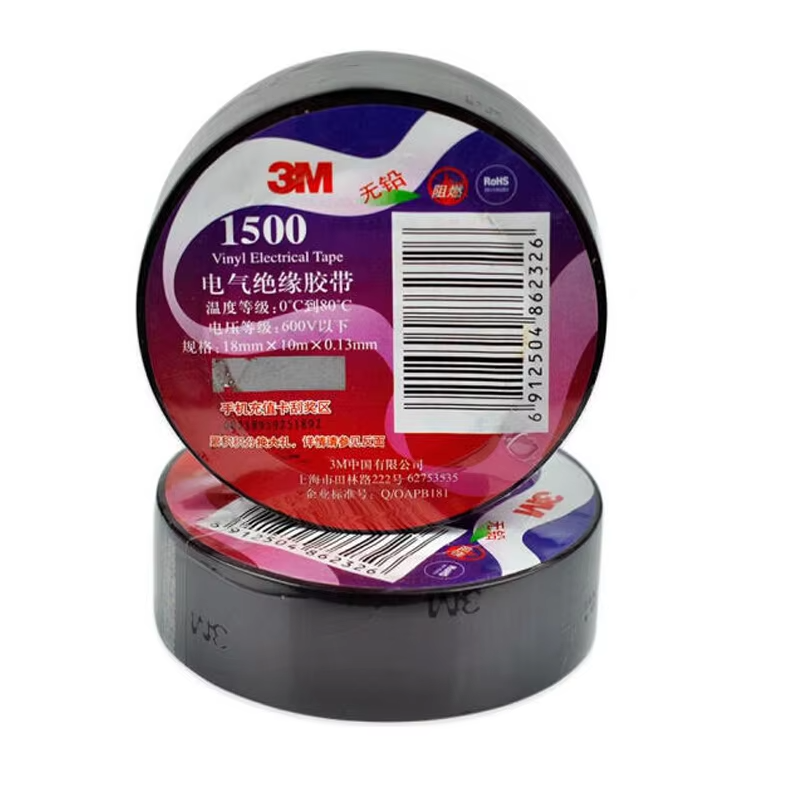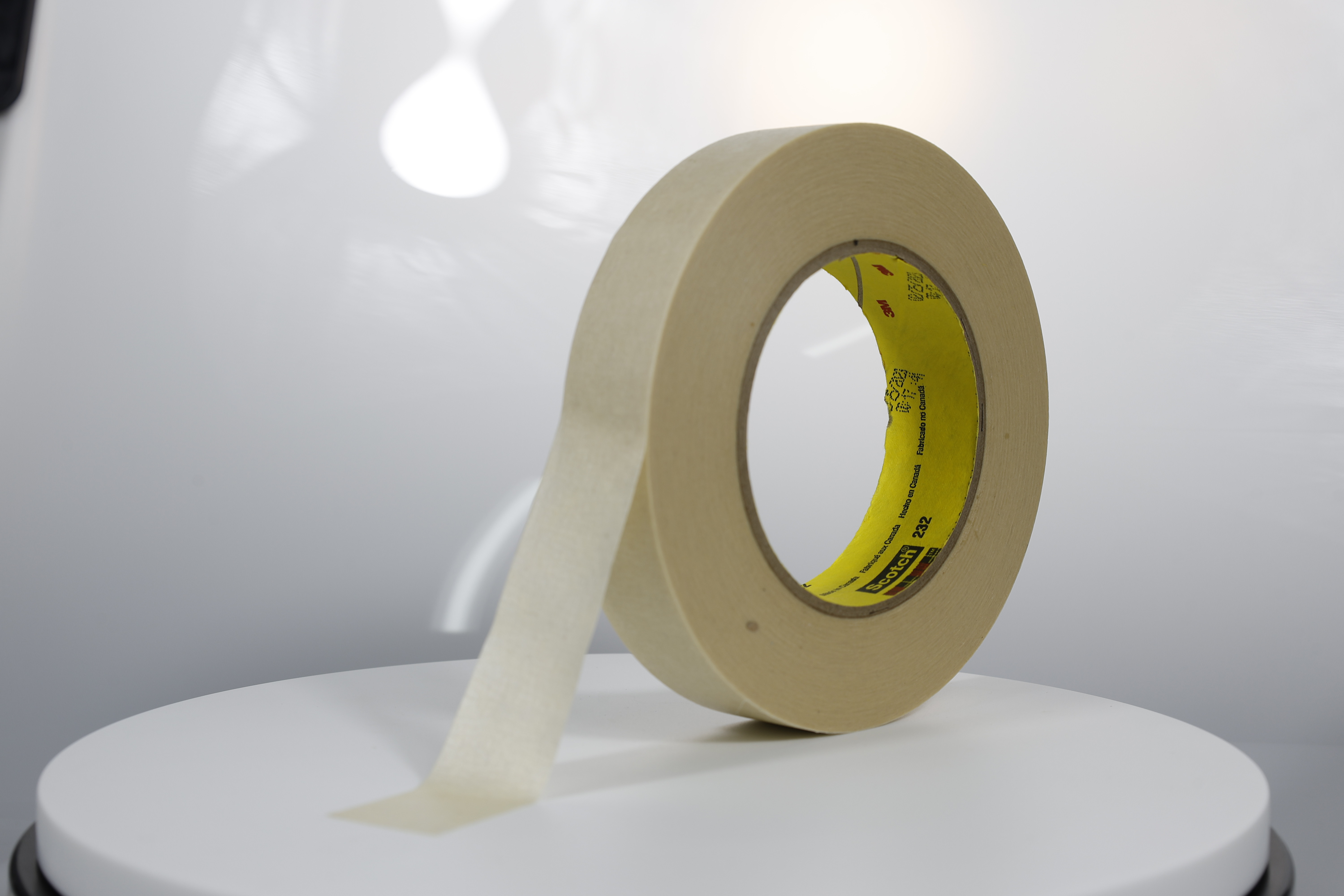Have outdoor electrical equipment? Use UV - resistant tapes to keep it working for years.
Understanding UV Damage and Protective Solutions
How sunlight degrades equipment materials
Sunlight, specifically UV radiation, significantly impacts various equipment materials such as polymers, metals, and fabrics. UV radiation initiates chemical reactions that degrade the molecular structure of these materials, particularly affecting polymers by reducing their tensile strength. Scientific studies show that untreated plastics can experience up to a 50% reduction in tensile strength after just 12 months of UV exposure. This degradation is not exclusive to polymers; metals can undergo surface oxidation, while fabrics might fade and lose their elasticity. The UV damage to daily equipment, such as automotive parts and building materials, can lead to increased maintenance costs and frequent replacements, emphasizing the importance of protective measures.
The science behind UV-resistant polymer stabilization
Polymer stabilization against UV radiation involves the meticulous addition of specific chemicals to enhance product longevity. Key additives include UV absorbers and hindered amine light stabilizers (HALS), which are effective in neutralizing the harmful effects of UV rays. UV absorbers work by absorbing the UV light and dissipating it as heat, while HALS predominantly operate by scavenging free radicals produced during UV exposure. Such measures can increase the lifespan of treated materials by up to 300%, showcasing a remarkable performance improvement compared to untreated counterparts. Manufacturers should consider these additives when developing UV-resistant products to meet the rising expectations for durability and performance in outdoor applications.
Comparing traditional tapes vs UV-resistant options
Traditional tapes often fall short in durability and longevity when exposed to UV radiation, making UV-resistant tapes a superior choice for outdoor applications. The distinction lies in the material composition, as UV-resistant tapes are specifically engineered to withstand prolonged sunlight exposure. Comparative studies reveal that non-UV tapes have a higher failure rate in external environments, whereas UV-resistant alternatives maintain integrity and adhesive quality over extended periods. This leads to a conclusion on cost-effectiveness as UV-resistant tapes offer longer replacement intervals, thus reducing maintenance expenses. Employing UV-resistant tapes is not only beneficial for safeguarding equipment but also provides economic advantages by reducing long-term costs associated with frequent replacements.
Critical Applications for UV-Resistant Tapes
Protecting Electrical Systems with insulating tape
Using UV-resistant insulating tape in outdoor electrical systems is crucial for preventing electrical failures. Exposure to the sun's UV rays can lead to degradation of traditional insulating materials, increasing the risk of short circuits and system failures. UV-resistant insulating tape not only enhances the longevity of electrical systems but also boosts their reliability. For example, the power generation and telecommunications industries rely heavily on electrical insulation to ensure safety and performance. In these sectors, any downtime due to electrical failures can result in significant operational and financial losses, underscoring the importance of robust UV protection.
Outdoor Equipment Sealing Using Rubber Tape
Rubber tape stands out for its superior sealing properties, particularly under harsh weather conditions. Its flexibility and waterproof nature make it ideal for outdoor equipment applications. Studies have shown that using rubber tape in outdoor environments can significantly reduce maintenance costs because of its durability and resistance to extreme conditions. Industries such as agriculture and construction frequently depend on rubber tape for sealing and insulating purposes. In construction, for instance, rubber tape is essential for sealing ducts and around windows and doors, ensuring buildings remain insulated from the elements without frequent replacement or repair.
Wire Harness Preservation in Automotive/Industrial Settings
UV resistance is a critical factor in wire harness applications to prevent insulation failure that could lead to equipment malfunction. UV-resistant tapes protect wire harnesses from degradation and extend the lifespan of automotive and industrial systems. Statistics demonstrate that using UV-resistant tape can lower failure rates and enhance equipment longevity. Case studies from the automotive industry highlight successful implementations where UV-resistant tapes have protected wire harnesses in vehicles, contributing to fewer malfunctions and longer-lasting components. These tapes ensure that wire harnesses maintain their integrity even under continuous exposure to sunlight, which is common in both automotive and industrial settings.
PVC Tape Alternatives for Long-Term Exposure
In environments where prolonged exposure to UV rays occurs, considering PVC tape alternatives is essential for ensuring durability and performance. Studies comparing PVC and UV-resistant tapes reveal that UV-resistant options significantly outperform PVC tapes in terms of adhesion and long-term durability in outdoor environments. When selecting tapes for such applications, it is crucial to consider factors like temperature fluctuations, moisture levels, and specific industrial challenges. For instance, aerospace and maritime industries often opt for these UV-resistant alternatives due to their unparalleled ability to withstand harsh environmental conditions while maintaining structural integrity and effectiveness.
Performance Advantages of UV-Resistant Adhesives
Weatherproofing through Hydrophobic Formulations
UV-resistant adhesives with hydrophobic formulations provide significant advantages in weatherproofing applications by preventing water intrusion and enhancing durability. Hydrophobic properties repel water, ensuring that adhesives maintain their bond integrity in wet conditions. For instance, in an industrial setting, adopting UV-resistant adhesives for waterproofing projects has reported a substantial increase in longevity and performance. A study revealed that using such formulations can improve performance by up to 30% compared to standard adhesives. These attributes are particularly beneficial in sectors demanding robust waterproofing solutions, such as construction and marine industries, where long-lasting results are a priority.
Thermal Stability in Extreme Temperatures
UV-resistant adhesives excel in maintaining adhesion properties under varying extreme temperatures, demonstrating high thermal stability. This characteristic is vital for applications exposed to fluctuating or high-heat environments, such as outdoor installations and industrial settings. Research indicates that these adhesives can withstand temperature ranges from -40 to 150 degrees Celsius without losing adhesion strength. Such stability ensures consistent performance, preventing failures that can occur with temperature-sensitive materials. In industries like automotive and aerospace, where reliability under temperature extremes is crucial, UV-resistant adhesives have proven to be invaluable due to their capability to maintain a strong bond across a wide temperature spectrum.
Resistance to Cracking and Adhesive Failure
Cracking and adhesive failure are common challenges in environments with high UV exposure, but UV-resistant adhesives offer a solution with enhanced resistance. By mitigating failure mechanisms associated with UV-induced degradation, these adhesives provide better long-term reliability. Data shows a significant reduction in cracking occurrences and adhesive failures when UV-resistant adhesives are used, with improvements of up to 40% in performance metrics. Real-world cases further illustrate their effectiveness; in automotive manufacturing, switching to UV-resistant adhesives minimized vehicle assembly line issues and extended the lifecycle of components reliant on adhesive bonds. Such durability makes them preferential in contexts demanding high resilience and reliability.
Selecting the Right UV-Resistant Tape
Material considerations: Rubber vs PVC vs Polyolefin
When selecting the right UV-resistant tape, understanding the material differences is crucial. Tapes made from rubber, PVC, and polyolefin offer distinct characteristics in terms of durability, flexibility, and UV resilience. Rubber tape is celebrated for its exceptional flexibility and is excellent for applications needing stretchability, like electrical insulation. PVC tape, also known as electrical insulation tape, offers considerable durability and is resistant to flame and weathering, making it a staple in both household and industrial settings. Polyolefin tapes are known for their superior UV resistance and chemical durability, ideal for outdoor applications in harsh environments. Industry experts often recommend choosing the tape material based on specific use cases, such as selecting PVC for wiring insulation and polyolefin for outdoor sealing tasks. Innovations in tape technologies continue to enhance these materials, offering even more robust solutions for challenging environments.
Adhesive strength classifications for different surfaces
Adhesive strength varies significantly across surface types, demanding careful selection to ensure optimal performance. For metallic surfaces, UV-resistant tapes with a robust adhesive compatible with slick finishes are ideal. Conversely, tapes used on plastics may require specialized adhesive strength to prevent degradation or slippage. Research underscores that UV-resistant tapes with versatile adhesive properties cater well to a variety of industries, demonstrating effective bonding on wood, plastic, and metals alike. End-users should be guided by surface specifications, opting for stronger adhesives for concrete and similar porous materials. This tailored approach ensures that the adhesive's capabilities align with the application requirements, maximizing longevity and performance.
Industry-specific certifications to look for
Certifications play a pivotal role in ensuring the UV-resistant tapes meet industry standards for reliability and safety. Notable certification standards include ASTM and ISO, which ensure that products are tested and proven for specific environmental and usage conditions. These certifications are particularly crucial in industries like construction and automotive, where product failure can have significant consequences. Ensuring that tapes meet these standards implies a guarantee of quality and performance, offering peace of mind to users relying on these materials for critical applications. Insights from industry experts suggest that maintaining compliance with these certifications remains a key factor in product development and market trust.
Installation and Maintenance Best Practices
Surface Preparation Techniques for Optimal Adhesion
Proper surface preparation is crucial for ensuring optimal adhesion when installing UV-resistant tapes. Effective surface preparation involves cleaning the surface thoroughly to remove any dust, debris, or oils. This ensures that the adhesive can fully bond with the material. Additionally, roughening the surface with sandpaper can enhance adhesion, particularly on smooth surfaces like metal or plastic. Research indicates that surfaces properly prepared according to these guidelines demonstrate significantly increased adhesion quality compared to those that are not. It's important to closely follow the manufacturer's installation guidelines to maximize the tape's performance and longevity.
Overlap Patterns for Complete UV Coverage
Employing the correct overlap patterns is essential to achieve comprehensive UV protection when applying tapes. By strategically overlapping tape edges, you can mitigate UV degradation and bolster durability. Studies have shown that tapes applied with precise overlap techniques provide enhanced protection, significantly reducing the risk of UV damage over time. To ensure complete coverage, it's recommended to start from the bottom of the surface and work upwards, allowing for a consistent overlap. Following best practices in overlap application not only extends the life of the tape but also minimizes exposure to harmful UV rays.
Inspection Intervals for Tape Integrity Checks
Establishing regular inspection intervals is vital for maintaining tape integrity and ensuring its effectiveness over time. The frequency of these checks may vary based on environmental exposure levels, with more frequent inspections advisable in harsh conditions. Research correlates proactive inspection and maintenance with increased tape lifespan and consistent performance reliability. To ensure ongoing tape integrity, consider incorporating visual inspections and performance tests into your maintenance routine. Regular checks help identify any early signs of wear or damage, allowing for timely interventions and optimal performance throughout the tape's lifespan.
Recommended Products
 Hot News
Hot News
-
TAPE Team Conquers Shenzhen’s Phoenix Mountain: Unity, Ambition, And New Heights In 2025
2025-02-21
-
The Role of Polyimide Electrical Tape in Electronics Insulation
2025-01-21
-
High Strength Double-sided Tape for Secure Bonding
2025-01-15
-
Durable Foam Tape for High-Performance Applications
2025-01-10
-
High Temperature Resistant Masking Protective Tape for Extreme Conditions
2025-01-01
-
Adhesive Tapes Market size is set to grow by USD 23.89 billion from 2024-2028, Increasing demand from end-user industries boost the market!
2024-08-22






